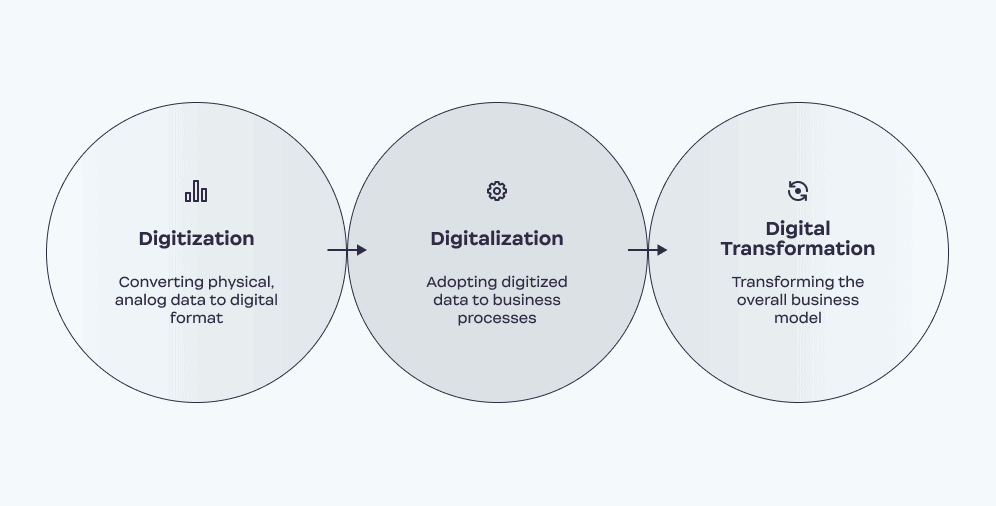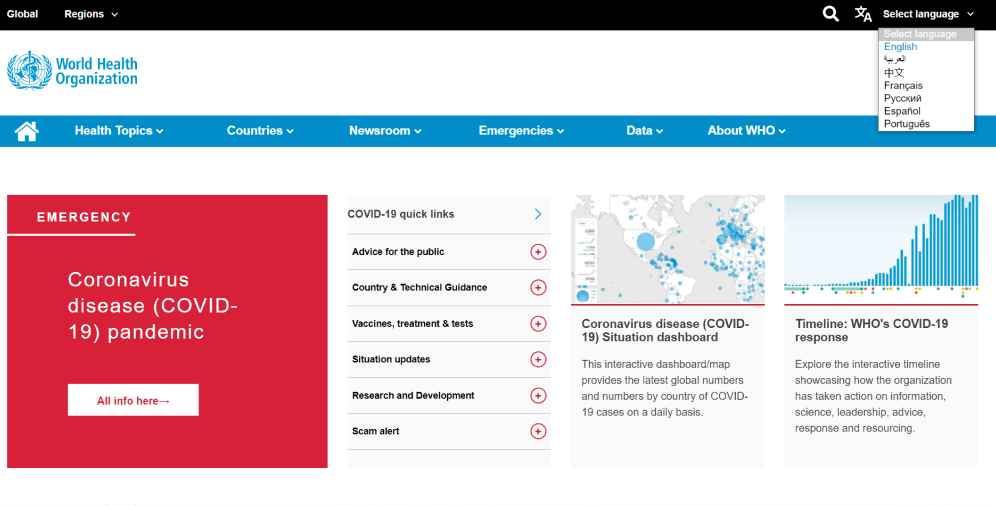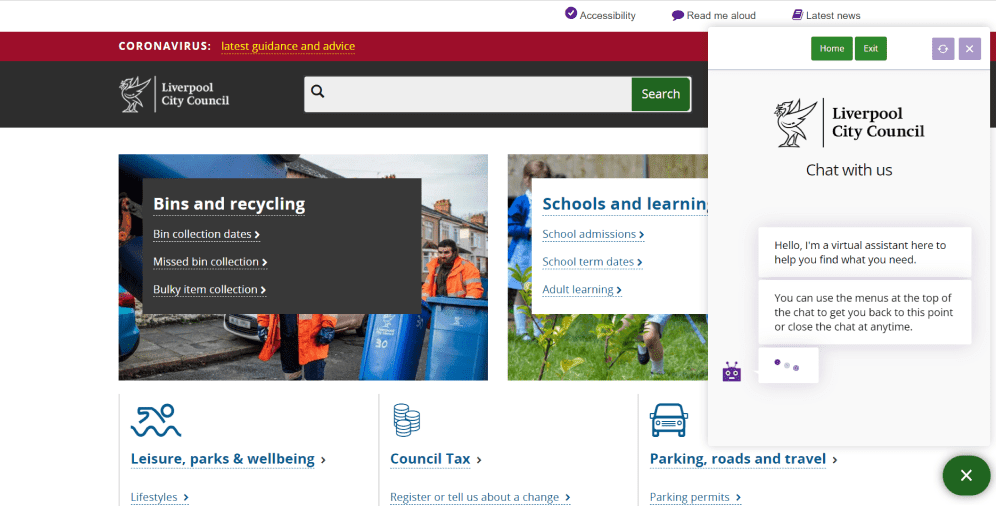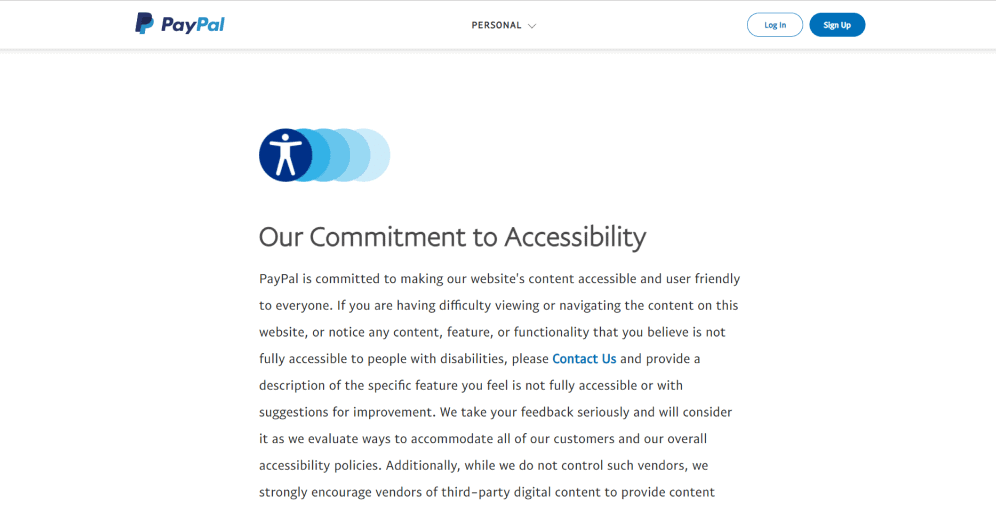Outline:
In the digital era, change is an inevitable factor. Over the years, the digital transformation has revolutionized the way businesses operate. This transformation has introduced numerous novelties in both business management and the assets it employs. As a result, corporate web development has gained a new role in business operations.
However, this is not the end of the digital transformation. As businesses are starting to see the benefits of AI-powered solutions, machine learning, and other digital assets, they are becoming more digitally aware and more resilient to fit into the current market environment. This leads to the question of how companies can effectively develop a website that responds to these changes.
In this article, we will discuss the importance of adapting to the current digital transformation and how it affects corporate web development. Additionally, we will provide insights into how businesses can develop a website that is effective in meeting the changing demands of the market.
What Is Digitization
Digitization can be traced back to the 1940s, where Claude Shannon’s work on the mathematical theory of communication laid the groundwork for the digital age. It involves converting non-digital data into a digital format that can be easily used and transmitted by computers. The shift from paper notes to digital records made data sharing and management much more effortless. However, the early stages of digitization mostly involved mimicking physical record-keeping methods in a digital format.
What Is Digitalization
Digitalization takes digitization one step further. It refers to the adoption of digital technologies and digitized information to automate business processes, making operations more efficient and profitable. Digitalization involves incorporating digital technologies into the overall business model and adapting to the changing market environment. For instance, converting Excel spreadsheets to Google Sheets stored in the cloud and accessible to other users is an example of digitalization.
What Is Digital Transformation
Digital transformation is the ultimate goal of the digital age. It involves transforming the way businesses operate, products, and patterns to fully harness the power of digital technology and data. Digital transformation goes beyond the adoption of digital technologies and involves a fundamental change in how a business operates. It can impact every aspect of a business, from its internal operations to customer experience. In summary, digitization and digitalization pave the way for digital transformation, which is a long-term, strategic approach to the use of technology in business operations.

Digitization in Business
By converting analog information into digital formats, businesses can harness the power of advanced technologies, such as artificial intelligence, big data analytics, and cloud computing. This shift not only enables seamless communication and collaboration but also drives innovation, reduces costs, and facilitates data-driven decision-making. As digital transformation continues to shape the global business landscape, companies must adapt to stay competitive and meet the ever-evolving needs of their customers.
Digitalization in Business
As for digitalization, by leveraging advanced technologies such as artificial intelligence, machine learning, and big data analytics, businesses can optimize decision-making, improve customer experiences, and gain a competitive edge. In other words, it is a digital-first mindset that helps thrive in today’s increasingly connected world.
Digital Transformation in Business
Now that we have explored aspects of Digitization, Digitalization, and Digital Transformation, it’s important to understand what they all mean in today’s context. To get a more comprehensive understanding, let’s take a closer look at digital transformation from two different angles.
From a process perspective, digital transformation involves integrating digital assets into all areas of a business to improve the way it operates and manages its external affairs. The goal is to keep pace with the advancements in the IT sector and remain relevant to modern standards.
For instance, consider the example of an artist who only sells their artwork offline. If a customer wants to purchase a painting, they would have to visit the artist’s studio. However, if the artist adopts an online platform to showcase their work and leverages an international shipping service, they can reach a wider audience, expand their business, and boost revenue. In other words, the artist’s digital transformation can help them capitalize on modern technological advancements.
On the other hand, digital transformation also involves a fundamental change in a business’s thinking and approach towards external communication. By embracing new technologies, businesses can innovate and creatively engage with their customers, resulting in better business growth and reputation.
It’s clear that digital transformation is an inevitable change that businesses should embrace to stay competitive and meet the demands of modern-day customers.
The Top Drivers of Digital Transformation and Why They Matter
As for digital transformation, there are several drivers that businesses should consider to stay competitive and thrive in today’s market environment. So, what are they:
Changed Customer Expectations
One of the most crucial drivers of digital transformation is changing customer expectations. Customer experience has always been vital for business performance. To provide a seamless and enjoyable customer experience, businesses must meet their customers’ expectations. Still, it is not enough to have a general understanding of your customers. Instead, it is essential to have a more personalized approach that meets their specific needs.
This requires the collection of customer data, which can be challenging for large corporations. However, with the emergence of customer data platforms, businesses have gained a single source of information that helps them create a more personalized experience, offer relevant products and services, and build effective marketing campaigns. By improving data collection and integration, businesses can significantly advance the customer journey and stay ahead of the competition.
Security Issues
Digital transformation requires businesses to rapidly develop and deploy solutions to stay competitive. However, this can result in security issues being overlooked, leading to digital transformation risks. To mitigate this risk, businesses need to introduce solid defense mechanisms, such as cybersecurity solutions. This can include technologies like artificial intelligence, machine learning, and the cloud to provide robust web security solutions.
Mobile Technology
Today, having a responsive website or mobile version is standard rather than extended functionality. Mobile devices have become the center of customers’ connected environment, enabling businesses to be accessible to users from anywhere and anytime. This has made mobile technology a gateway to extended digital presence, paving the way for intensive digital transformation.
The Intersection of Website Design and Digital Transformation: A Vital Connection
In the digital age, a corporate website is a vital business asset that must adapt to the changes brought about by digital transformation. In addition to responsiveness and cybersecurity, corporate website design must now consider many other significant aspects to remain consistent and effectively communicate the brand’s values.
Upgraded functionality or revamp may not be enough to align a website with its new role in the digital transformation landscape. Instead, businesses must recognize that a website can now be designed to handle problems without day-to-day involvement. By becoming autonomous, a website can deliver a first-rate user experience, which, in turn, can free up more space for external performance since internal communication will be automated.
For example, integrating machine learning into a website can save time as it will automatically point out the core needs of the target audience. If the business owner is not available, the website’s functionality empowered by digital transformation will continue to deliver the right products or services to customers.
However, to make this happen, it’s vital to understand that a corporate website is no longer a stand-alone platform. Thanks to digital assets, it now has the right to become an omnichannel of communication, delivering a consistent omnichannel experience. This is a considerable benefit for businesses that accelerate digital transformation since companies with robust omnichannel experiences retain 89% of their customers, compared to 33% retention for companies with a weak one.
Therefore, corporate website design should move from being an intermediary between customers and businesses to include technology as a third-party. Linking them all together will contribute to what an omnichannel website is, and this is the direction in which corporate website design should be heading to remain relevant and effective in the digital age.
Revolutionizing Business Operations: The Benefits of Digital Transformation Adoption
With each new development in the digital age, customer expectations continue to evolve. As a business owner, adapting to these changes is critical for staying competitive in the market. One of the most effective ways to do this is by making your website omnichannel.
To illustrate the benefits of an omnichannel approach, let’s compare two artists. The first artist only sells their paintings in a physical store, while the second artist has embraced digital transformation and sells their artwork through an omnichannel website. The website allows the artist to respond to customer demand by featuring their works, offer shipping options to customers, and provide support through chatbots. This omnichannel approach satisfies customers and enables the artist to focus on creating new art.
Implementing digital transformation can take a company to a whole new level. In addition to meeting customer expectations, there are several other benefits to embracing digital transformation:
- Immersive Customer Experience: Digital technology adapted to your website can provide customers with an enriched experience beyond just satisfying their expectations. With an omnichannel website, customers won’t need to go elsewhere to solve their issues, which can significantly benefit your business.
- Costs and Efforts Saved: An omnichannel website can do more with less. By employing automated processes, there is more space for creativity and business innovation, which can save you time and money.
- Increased Agility: Digital solutions and agile processes allow businesses to adapt quickly to changing environments, providing them with the flexibility needed to stay ahead of the industry.
- Innovation: Embracing digital change means taking advantage of the newest technologies and innovations. For instance, cloud technology enables businesses to protect their data with the strongest digital defense, including encryption and cybersecurity. This provides a reliable source for customers, enhancing overall business continuity.
Staying Ahead of the Curve: How to Ensure Your Website Responds to Digital Innovation
Once you know the role of a business website within digital transformation and the benefits of embracing these changes, another question might come to mind – how to effectively ratify innovation and stay consistent with a renewed strategy? If you’re not sure whether you can manage it, you can always refer to a competent digital transformation consulting service. But if you’re a solo player, there are the top 5 digital innovation assets with the best examples to consider for your corporate website design in 2022:
01 Artificial intelligence
AI can do a lot to your website to become digitally empowered. In particular, it can enhance the platform’s appearance, strengthen its search abilities, manage and organize the content better, improve UX, and help with digital marketing campaigns. Sounds impressive, but what does AI stand for? Essentially, it is a technological intelligence that aims to replace human tasks making various operations faster and with fewer efforts. And with the growth of digital transformation, AI has become an integral part of modern web design and development. Thus, at least 90% of new enterprise apps will deploy AI technology within their processes and products by 2025, (IDC).
It all started with the Grid as the first example of AI in web design, but now there are many more AI-powered solutions to implement. For instance, look at the Netflix AI recommendations that help it deliver highly customizable experiences to the viewers. The technology traces the users’ journey through their on-site search route and then automatically offers the content suitable for their preferences.

Another good example is Amazon’s AI-enhanced algorithms that provide the insights needed to give the consumers what they may want to buy based on their previous items lists.

If you want more, look at how the World Health Organization uses artificial intelligence to translate the content of its website. That makes the platform accessible for people from different cultures, which is vital for organizations of such scale and other industrial giants.

Ultimately, artificial intelligence has a massive output on web design, and chatbots being part of that, can also help your website enter the digital transformation. Here is how the Liverpool City Council website embarks on that bandwagon with its artificial intelligence chatbot and makes it quite successful.

02 Machine learning
Living in epoch machine learning, we can’t deny its importance to the business website design list. Acting similarly to artificial intelligence, machine learning helps spot and recognize trends, make decisions, forecast, and improve the user experience. In other words, it goes far beyond the visible customers’ expectations and drives them further by offering exactly what they need. Such a data-driven approach can guarantee higher customer involvement, making your website a valuable assistant for them.
The most vivid example of machine learning is Google search. It uses the weighting of connections to predict words that can appear together in search queries. That significantly saves the users’ time, making them more loyal to the engine.

03 VR
VR is often called the future of web design, and there are quite a few reasons for that. Not only does it help to deepen the user experience, but it also contributes to higher engagement and interactivity. Having it on your website can increase retention as curious visitors won’t be able to leave without experiencing that joy.
Apart from entertainment, VR can significantly help you in business performance. Take the real estate industry that eagerly uses VR in home listings to provide virtual walkthrough options for home buyers. The full presence effect can be strong decision-making leverage, helping you get more closed deals without even holding real meetings with potential clients. Sotheby real estate definitely knows how to get an advantage from that.

04 Accessibility
You may involve numerous of the latest top-notch technologies to your website, but if the site is not accessible, what’s the point then? Around 20% of the population lives with a disability, which signifies one in five web visitors may need assistive technology. Thus, having an accessible website is everything, especially in the settings of digital transformation.
In a nutshell, digital accessibility means that users of all abilities can manage your website at ease, regardless of what device they launch it on, and without any obstacles depriving them of the site’s functionality. And if it isn’t so, you may face low conversion rates and the same low customer loyalty, and a high chance to lag behind the competition. So, if you want your website to fit the digital transformation settings, it’s critical to ensure it is accessible like the Paypal website does it.

Also, take a look at Apple Siri. It uses voice UI to simplify the search process, which positively impacts accessibility and brings user experience to another, more prolific level.

05 Digital transformation strategy
The ultimate thing to remember is that strategy, not technology, drives digital transformation. And when speaking about what website needs to adapt to the changes effectively, the answer is clear. So, let us not reinvent the wheel.
Digital transformation strategy is not always the same from business to business or website to website. However, there are some practices that are true to whatever strategy and can guarantee success:
- outline your aims
- know your target audience
- define means you need to reach the goals
- plan out your budget
- improve
There are numerous digital transformation success stories to inspire you. But we name the two exciting examples. Nike’s digital transformation strategy appeared to be an effective tool to advance brand awareness and grow sales. Nike partnered with Amazon extending its digital presence and reaching out to more customers. Also, the brand employed AR to empower its Fit app, providing an exclusive yet entirely accessible brand experience to all.

Another success story is IKEA. Since COVID-19 entered the scene, the limitations caused by the pandemic urged the company to shift its focus to digital solutions. Its website empowered Augmented Reality home projects that allowed the customers to virtually furnish their homes before the deal. As a result, online purchases boosted. And that is how the balance between the business, customer, and technology within an omnichannel website can help you embark on digital transformation.

On a Final Note
With the rise of Digitization, Digitalization, and Digital Transformation, business websites have a critical role to play. Innovative digital assets have transformed them into an omnichannel of communication, enabling businesses to seamlessly connect with their customers and technology. With the ability to collect and use customers’ data, businesses can extend and enhance their experience, automate tasks, and improve agility. However, to fully leverage these digital assets and integrate them with other communication channels, businesses need to develop a clear digital transformation strategy. This will enable them to stay on track and avoid getting lost in a sea of inconsistency.
If you are unsure about how to navigate the digital transformation landscape within your corporate website, we are here to help. With our assistance, you can develop a solid digital transformation strategy that aligns with your business goals and objectives. Contact us today to learn more.




